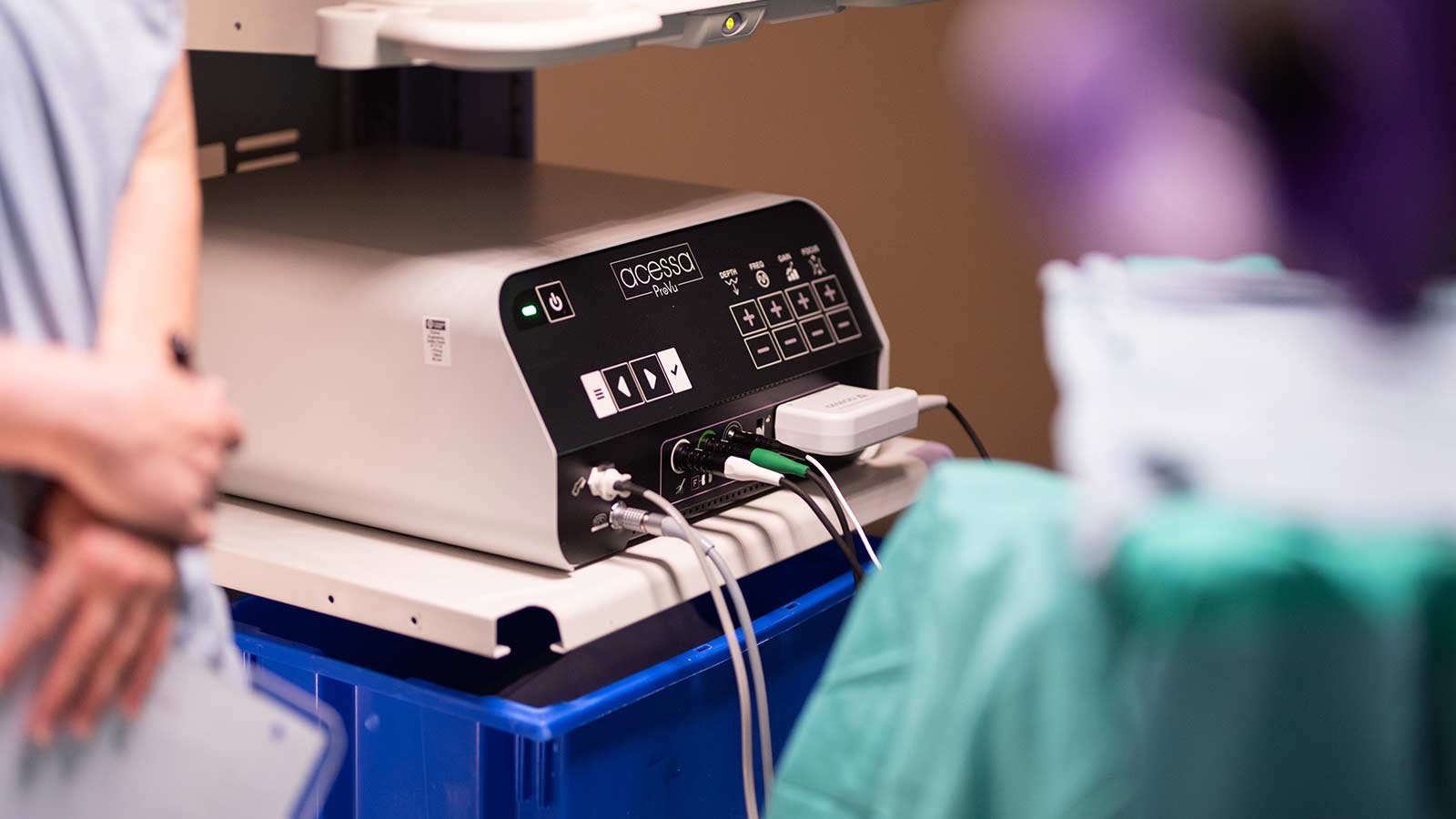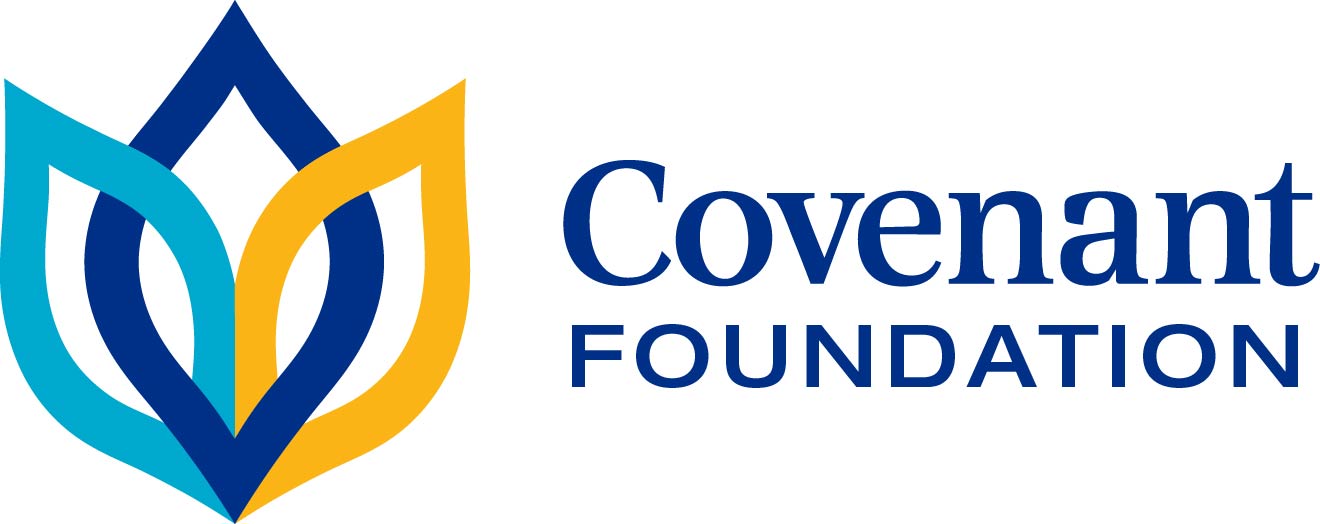For more than five years, Tanya Doran lived with constant pain, heavy menstrual periods, lack of energy and other symptoms of more than 10 fibroids — benign growths — on her uterus.
It wasn’t an uncommon experience. According to the Journal of Obstetrics and Gynaecology Canada, about 70 per cent of women in Canada develop fibroids before the age of 50, and about one-third of those women have symptoms that can be debilitating. Along with causing pain and heavy bleeding, the condition can affect fertility, threaten pregnancy and cause urinary problems, pressure on the bladder, anemia, bloating and other issues.
When medication intended to reduce the size of Tanya’s fibroids only added to her discomfort, she began looking for another solution. An Internet search eventually led her to having surgery at the Misericordia Community Hospital, the only site in Alberta and the fourth site in Canada to use Acessa® technology to treat uterine fibroids.
“It was getting to the point where it was rather debilitating, and (the fibroids) were really impacting my quality of life,” says Tanya, 51. “I was fortunate to find the Acessa procedure, which is less invasive (than other treatment options), with less downtime required for healing. From what I’d read, it has a 95 per cent success ratio.”
Invented by Dr. Bruce Lee of Newport Beach, California, Acessa is an innovative procedure in which surgeons use a camera, ultrasound and a special needle array to apply heat directly into a patient’s fibroids. The heat ablates, or burns, the fibroids, which causes them to shrink over time, relieving the patient’s symptoms. The procedure is performed under general anesthesia, requiring only three small incisions in the abdomen and no cutting, suturing or removal of the uterus.
The option of preserving her uterus was an important factor in Tanya’s decision to have the Acessa procedure. “The one thing that stuck with me was that with the Acessa procedure I got to keep the organs I was born with. They are integral components of my body, and there are benefits to keeping them,” she says.
Tanya’s surgeon, Dr. Dana Rivet, and her colleague, Dr. Aubrey Uretsky, brought the Acessa system to the Misericordia to offer their patients a minimally invasive treatment option, especially patients like Tanya who want to retain their uterus.
Before this technology was available, the options were either a myomectomy, which involves cutting through the skin in the abdomen and into the uterus to remove the fibroids, bringing an increased risk of bleeding and longer recovery, or a hysterectomy, which is a bigger surgery that involves removing the uterus, says Dr. Rivet.
The two surgeons were able to acquire the Acessa system largely through a private donation to Covenant Foundation from Kim Falconer, a patient of Dr. Aubrey Uretsky who wanted to show her gratitude and help other patients after having a hysterectomy and oophorectomy — surgeries to remove her uterus and both ovaries — which brought relief from many years of living with pain from fibroids and endometriosis, a disease in which tissue similar to the uterus lining grows outside the uterus.
“It didn't feel like enough to have such life-changing surgery and then to move on without trying to help others who might also be in pain,” says Kim. "When Dr. Aubrey Uretsky told me there was a piece of equipment the team was hoping to bring in, I wanted to do everything I could to bring it here.”
Adopting the new technology as part of the team’s regular practice required training for the surgeons and the nursing staff with Dr. Lee, the Acessa inventor.
Representatives from Hologic, the company that produces the system, also came to the Misericordia to show charge nurse Donna Specht and the team how to set up the bed, ultrasound equipment and video monitors for the surgery in the operating room. The procedure requires different charting from other surgeries, and the settings on the ultrasound machine need to be adjusted, says Donna.
The team initially evaluated the system with eight patients over three months last year, looking at its effectiveness, patient satisfaction and how well it fit into the workflows for setup and day surgery at the Misericordia site.
Overall, they were pleased with the results, says Dr. Aubrey Uretsky.
“Our initial experience was that it did everything we expected it to do and more. Our patients’ experience was outstanding, and (the procedure) fit into our practice at our hospital well."
-Dr. Aubrey Uretsky
The surgical team now performs two to three Acessa procedures a month, and there is a waiting list of patients from across Alberta, British Columbia and as far away as the Yukon. The main limit to patients’ eligibility for the procedure is having enough space in their abdomen for the camera and needle array.
“There are people whose fibroids are too large to do this (surgery), but outside of that, the eligibility criteria are basically what patients are looking for — if they're looking for minimally invasive surgical options or to retain their uterus and their fertility,” says Dr. Uretsky.

The Acessa system includes a camera, ultrasound and special needle array, which surgeons use to apply heat
directly into a patient’s fibroids, causing them to shrink.
The team continues to see good results for their patients. “Overall, it's effective at treating the problem,” says Dr. Rivet. “(Patients) do see a reduction in bleeding. We see a reduction in bulk symptoms and in pain associated with the bulk of the fibroid.”
Compared to patients who undergo more invasive surgery, patients who choose the Acessa procedure can return to work faster — on average in two weeks versus six weeks following other surgeries — and experience fewer incisions, fewer complications and significantly less blood loss, says Dr. Rivet. In most cases, patients lose less than 100 millilitres of blood during the Acessa procedure versus upwards of one litre of blood during a myomectomy.
Achieving these results benefits the hospital system. Fewer complications and less pain mean less time patients spend in the hospital recovering. Following Acessa surgery, patients generally go home the same day rather than staying in the hospital three to four days after having a myomectomy or other procedures.
But the major measure of the Acessa procedure’s success is patients’ quality of life, which increases “relatively quickly and substantially,” says Dr. Uretsky.
That was Tanya’s experience following her Acessa procedure. She says she could “no longer feel the fibroids from outside” her body within three weeks. She was also sleeping better, making fewer trips to the washroom at night, no longer taking pain medication and starting to get her energy back.
“One of the best results was that I was becoming more productive. I’m not as exhausted at the end of the day. I don’t think prior to surgery that I had tied all of those things together. You just accept (the symptoms) when they happen slowly over the course of a few years.”
From her experience, Tanya says she would recommend the Acessa procedure to other patients.
“Often, the first course is to go straight to a hysterectomy. That is such a game-changer, and it's not where we need to start the conversation; it's where we need to end it. Being informed and understanding that this procedure is available are really critical, and I would absolutely encourage others that if it fits their circumstances, and where they would like to go with their personal health journey, to consider it as well.”
Written by: By Marguerite Watson, senior communications advisor, Covenant Health, as originally published on the Covenant Health website.
Your support helps advance women's health through state-of-the-art technology and innovation. Please visit our donation page to help us continue to advance leading-edge care in your community.


